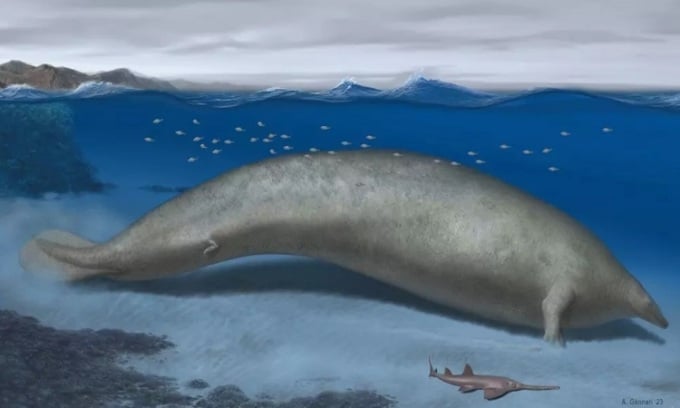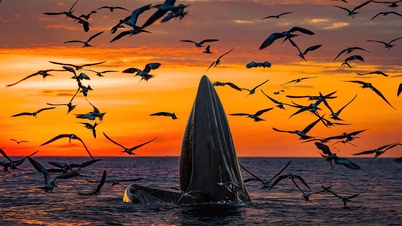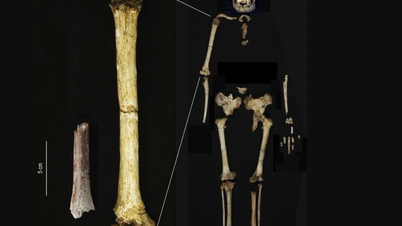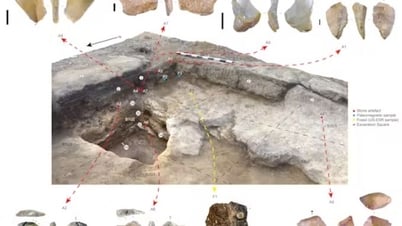Paleontologists describe a bizarre whale species, weighing more than twice as much as a blue whale (85-340 tons), that once lived in the ancient waters of what is now Peru.

Reconstructed image of Perucetus colossus. Photo: Alberto Gennari
A gigantic ancient whale species that lived 39 million years ago was truly a monstrous creature. It was more than twice the size of a blue whale, making it the heaviest animal ever to live on Earth. Researchers named this extinct marine mammal, a species of sauribasilod, Perucetus colossus . Its estimated body mass was between 85,000 and 340,000 kg. P. colossus measured approximately 20 meters in length, longer than a bowling lane, according to new research published on August 2nd in the journal Nature .
Paleontologists discovered the partially intact skeleton of this massive marine mammal 30 years ago in the southern Peruvian province of Ica. Since then, they have unearthed 13 vertebrae, 4 ribs, and a hip bone.
"One of my colleagues spotted the exposed bone fragments while searching for fossils in the Peruvian desert," said research team leader Eli Amson, a paleontologist and mammal fossil curator at the Stuttgart Museum of Natural History in Germany. "Excavating the fossils took a long time due to their enormous size. Each vertebra weighed up to 150 kg."
The research team could only estimate how enormous P. colossus was based on the limited number of bones they unearthed, as most of the carcass had decomposed over time, including all the soft tissue. However, the bones they did collect were very dense, meaning they were very heavy. To support such a heavy skeleton, the researchers believe the whale's soft tissue was likely lighter than the bone, allowing it to float more easily.
As a result, P. colossus certainly has a very strange shape. The research team described it as resembling a modern manatee with a very small head, a huge body, and tiny arms and legs. According to Amson, in terms of weight, P. colossus is clearly more massive than a blue whale. Its body length is shorter than that of a blue whale. However, it is difficult to estimate precisely how much fat and soft tissue surrounds the skeleton.
Its bizarre shape may have helped P. colossus maintain buoyancy and allowed it to glide slowly through the water, similar to manatees. P. colossus not only shattered perceptions about the shape of the planet's heaviest animal but also challenged what researchers knew about the evolution of marine mammals. This discovery means they peaked in body mass 30 million years earlier than previously thought.
"P. colossus certainly moved very slowly and dived in shallow water. We don't know what it ate because its head and teeth are gone. Our guess is that it spent most of its time on the seabed and didn't expend much energy searching for food," Amson said.
An Khang (According to Live Science )
Source link


![[Live] 2025 Community Action Awards Gala](/_next/image?url=https%3A%2F%2Fvphoto.vietnam.vn%2Fthumb%2F1200x675%2Fvietnam%2Fresource%2FIMAGE%2F2025%2F12%2F16%2F1765899631650_ndo_tr_z7334013144784-9f9fe10a6d63584c85aff40f2957c250-jpg.webp&w=3840&q=75)
![[Photo] Prime Minister Pham Minh Chinh receives Lao Minister of Education and Sports Thongsalith Mangnormek](/_next/image?url=https%3A%2F%2Fvphoto.vietnam.vn%2Fthumb%2F1200x675%2Fvietnam%2Fresource%2FIMAGE%2F2025%2F12%2F16%2F1765876834721_dsc-7519-jpg.webp&w=3840&q=75)
![[Image] Leaked images ahead of the 2025 Community Action Awards gala.](/_next/image?url=https%3A%2F%2Fvphoto.vietnam.vn%2Fthumb%2F1200x675%2Fvietnam%2Fresource%2FIMAGE%2F2025%2F12%2F16%2F1765882828720_ndo_br_thiet-ke-chua-co-ten-45-png.webp&w=3840&q=75)
![[Image] The tenacious fighting spirit of Vietnamese women's football](/_next/image?url=https%3A%2F%2Fvphoto.vietnam.vn%2Fthumb%2F1200x675%2Fvietnam%2Fresource%2FIMAGE%2F2025%2F12%2F17%2F1765990260956_ndo_br_4224760955870434771-copy-jpg.webp&w=3840&q=75)
![[Photo] Prime Minister Pham Minh Chinh receives the Governor of Tochigi Province (Japan)](/_next/image?url=https%3A%2F%2Fvphoto.vietnam.vn%2Fthumb%2F1200x675%2Fvietnam%2Fresource%2FIMAGE%2F2025%2F12%2F16%2F1765892133176_dsc-8082-6425-jpg.webp&w=3840&q=75)











































































![[Live] Closing Ceremony and Award Presentation for the "Impressive Vietnam Tourism" Video/Clip Creation Contest 2025](https://vphoto.vietnam.vn/thumb/402x226/vietnam/resource/IMAGE/2025/12/17/1765974650260_z7273498850699-00d2fd6b0972cb39494cfa2559bf85ac-1765959338756946072104-627-0-1338-1138-crop-1765959347256801551121.jpeg)

























Comment (0)